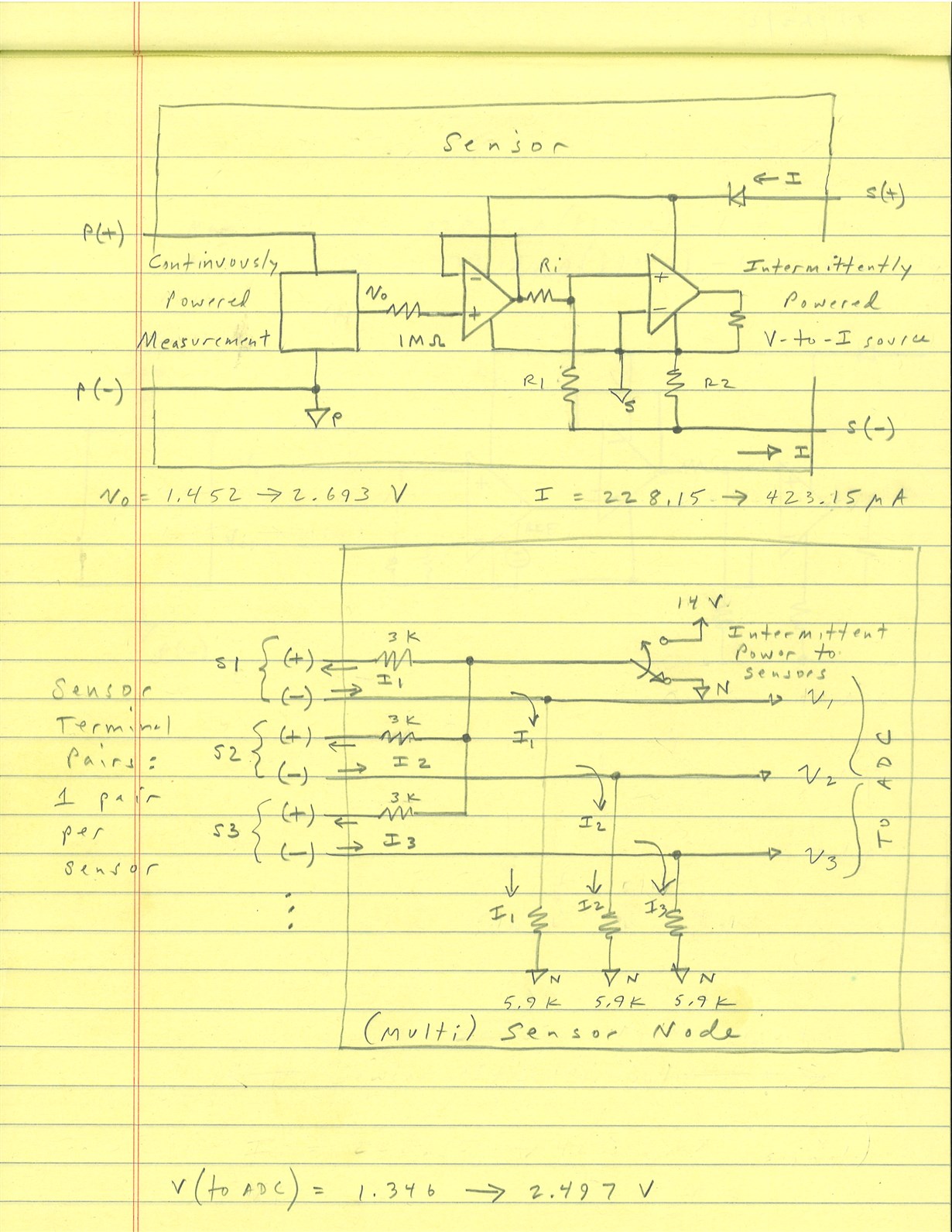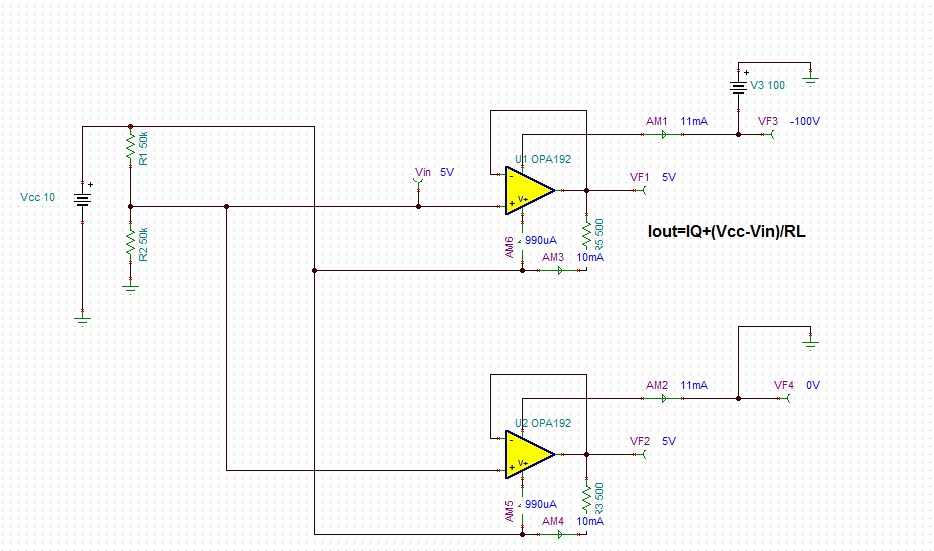Hi. I have an interesting sensor design problem I'm looking to solve with either an analog isolating amp (which I have no experience with) or an instrumentation amp (which I have some experience but not much).
Sensor circuit has 2 parts:
Continuously powered (P terminals) measurement, and intermittently powered (S terminals) signal current source. The continuously powered circuit has regulated Vdd (5V) and outputs the signal Vo = 1.452 → 2.693V. The intermittently powered (8 to 11V unregulated Vdd) V-to-I source circuit converts Vo into a sub-milliamp current signal I = 228 → 423µA.
When it’s time to take sensor measurements, the battery powered Sensor Node simultaneously powers all connected sensors at their S terminals, causing a signal current to flow in each sensor loop. Since each sensor signal current is different, each sensor’s S(-) terminal voltage is different. Note that there is no access to the Sensor Node internal circuit common.
The sensors require separate, isolated power at their P (continuous) power terminals because connecting a common DC power source to multiple sensors would interconnect their internal circuit commons, preventing their V-to-I sources from operating independently.
I want to change that. I want to power multiple sensors P terminals from the same DC power source. To do so, it seems to me I need to break the sensor signal common into two: one common (continuously powered circuit) will be at the same potential among all connected sensors; the other (V-to-I source internal common) will move up and down (∆V < 1.6V) with the signal current.
One thought is to insert an analog signal isolator at Vo so each sensor’s continuously powered and intermittently powered sections have separate, isolated signal commons. Does TI offer such a product which will operate within my two Vdd ranges? Recommendations? An additional requirement is the output stage must power up and stabilize within a couple mS.
Is there another way which doesn’t require isolating the sensor’s two signal commons?
Each V-to-I source internal circuit common’s voltage potential (relative to the Sensor Node internal common) varies less than 1.6V. Can an instrumentation amp’s ability to level shift accomplish this? I’m picturing a differential Vo with –terminal connected to the V-to-I source internal circuit common, and +terminal connected to the V-to-I source voltage input buffer. This approach seems somehow possible but I’m uncertain how to keep this “floating” differential Vo within the correct voltage range relative to the in-amp inputs.





